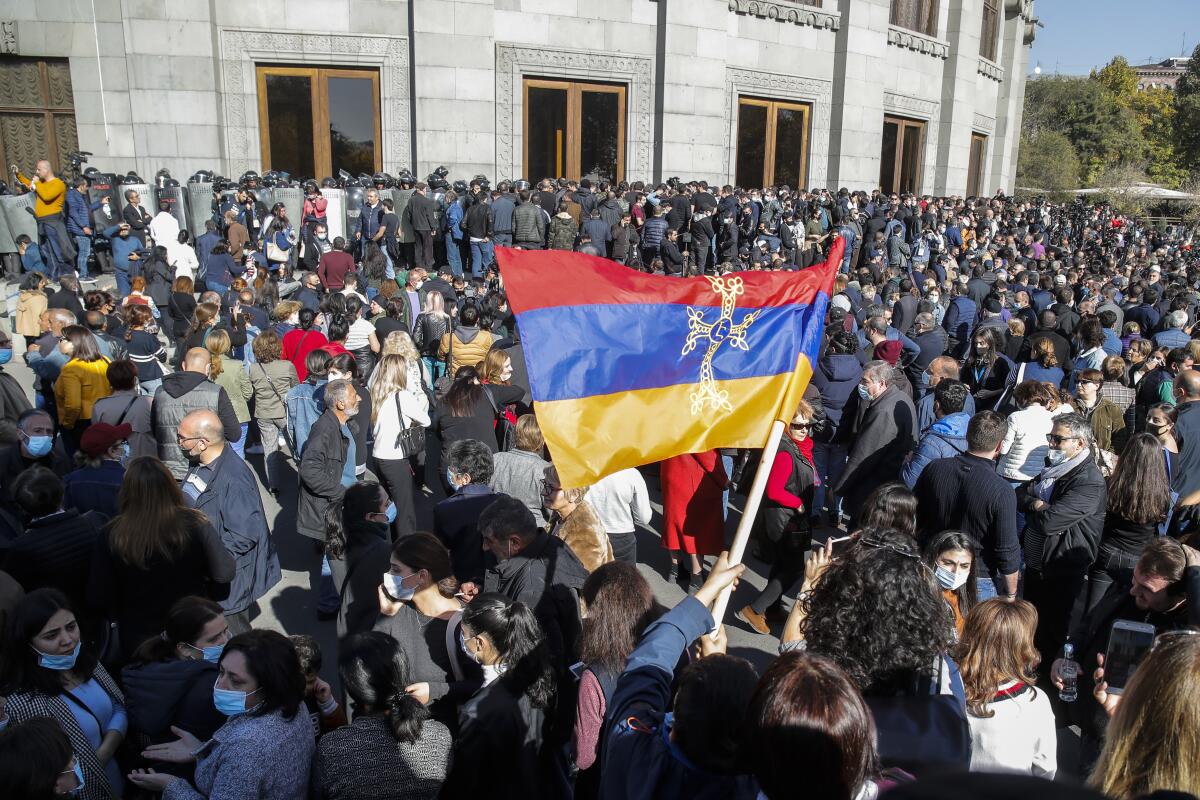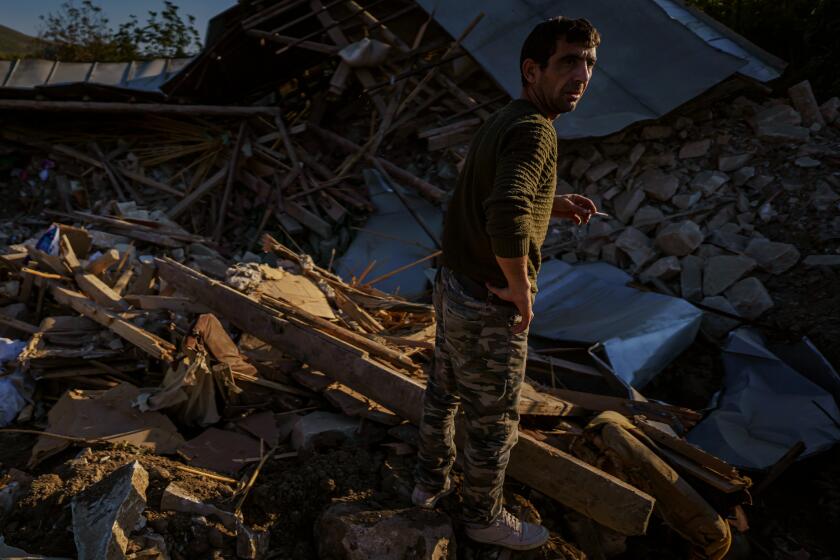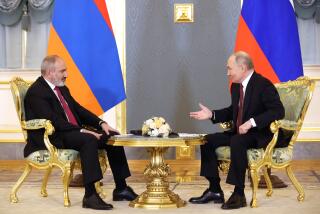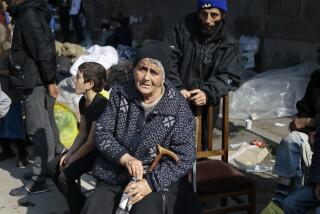Thousands in Armenia protest Nagorno-Karabakh truce terms

- Share via
YEREVAN, Armenia — Thousands of people gathered in the capital of Armenia on Wednesday to protest the country’s cease-fire agreement with Azerbaijan, which calls for territorial concessions in and around Nagorno-Karabakh and the deployment of nearly 2,000 Russian peacekeepers.
Participants at the rally, which Armenia’s opposition parties promoted, demanded the resignation of Prime Minister Nikol Pashinyan, who signed the truce along with the presidents of Azerbaijan and Russia. Some of the protesters in Yerevan clashed with police, and scores were detained.
The truce between the two former Soviet republics, brokered by Moscow and announced early Tuesday, came after significant advances by Azerbaijani forces that the Armenian-backed leader of Nagorno-Karabakh said made it impossible for his side to carry on.
The agreement was celebrated in Azerbaijan as a major victory and angered Armenians, who immediately took to the streets demanding that the pact be invalidated.
Armenian opposition politicians Wednesday called the agreement “treacherous” and demanded that Pashinyan step down.
“We need to save Armenia and Artsakh from Pashinyan,” Ishkhan Saghatelyan, a member of the Armenian Revolutionary Federation-Dashnaktsutyun political party, said at a rally that drew as many as 10,000 people. Artsakh is the Armenian name for Nagorno-Karabakh.
Armenia and Azerbaijan enlist artists, lobbyists and online activists in a 21st century propaganda war in their fight over Nagorno-Karabakh.
Armenia and Azerbaijan have been locked in a conflict over Nagorno-Karabakh for decades. The region lies within Azerbaijan but has been under control of ethnic Armenian forces backed by Armenia since a separatist war there ended in 1994. Heavy fighting erupted in late September — the biggest escalation of the conflict in a quarter of a century — and has left hundreds, possibly thousands, dead.
Several cease-fires announced over the last six weeks crumbled almost immediately, but the current agreement appeared to be holding, with neither side reporting any more fighting since it came into force.
It came days after Azerbaijan pressed its offensive deeper into Nagorno-Karabakh and took control of the city of Shusha, which Armenians call Shushi, which is strategically positioned on heights overlooking the regional capital of Stepanakert.
Nagorno-Karabakh’s separatist leader, Arayik Harutyunyan, acknowledged Tuesday that “had the hostilities continued at the same pace, we would have lost all of Artsakh within days.”
The use of drones has upset the military balance between Azerbaijan and Armenia in their longtime dispute over the territory of Nagorno-Karabakh.
Pashinyan, Armenia’s premier, said it was “extremely painful for me personally and for our people,” calling the situation a “catastrophe” and adding that he had no choice but to sign the peace agreement.
The deal calls for Armenia to turn over control of some areas it holds outside the borders of Nagorno-Karabakh. They include the Lachin region, through which the main road leading from Nagorno-Karabakh to Armenia passes. The road is to remain open and to be protected by Russian peacekeepers.
The deal also calls for transport links to be established through Armenia that would connect Azerbaijan and its western exclave of Nakhchivan, which is surrounded by Armenia, Iran and Turkey.
More to Read
Sign up for Essential California
The most important California stories and recommendations in your inbox every morning.
You may occasionally receive promotional content from the Los Angeles Times.












